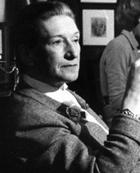
Elizabeth Bowen was born in Dublin on June 7, 1899. When her father began to suffer from mental problems, in 1907, Elizabeth and her mother moved to England. After the death of his mother in 1912, he moved to London, to his aunt and uncle's house. He studied art, but soon realized that his talent resided in writing. He then joined the circle of Bloomsbury, where he made friends with Rose Macaulay, who helped her find an editorial for her first book: Encounters (1923), a collection of short stories. Despite being married since 1923 to Alan Cameron (with whom he barely had physical treatment), Bowen maintained several extramarital affairs, including one with the Irish writer Seán Ó Falain and another with the American poet May Sarton. After the publication of his novel Al norte (1932), the couple moved to number 2 Clarence Terrace, near Regent's Park, where Bowen wrote A House in Paris (1935) and which is considered his masterpiece, The Death of the heart (1938). In 1937 he became a member of the Irish Academy of Letters. During the war and in the years immediately following, Bowen wrote several novels that portrayed London besieged by bombs and poverty, among which highlights the heat of the day (1949). In 1948 she was named Commander of the Order of the British Empire. After the retirement of her husband in 1952, the couple moved to the family property of Bowen's Court, in the Irish county of Cork. There they hosted writers such as Eudora Welty, Virginia Woolf, Carson McCullers or Iris Murdoch. The marriage, however, went through economic straits, and Bowen was forced to survive giving lectures in the United States. In 1959 he had to sell his house, which would be demolished in 1960. In 1969, he won the James Tait Black Memorial Prize for his novel Eva Trout, a work that was selected in 1970 for the Booker Prize. Elizabeth Bowen died of lung cancer in 1973, in a hospital in London. He was 73 years old. She was buried next to her husband, outside the church of St. Colman, in Farahy, county of Cork. It is considered one of the most important narrators in English language of the twentieth century.




